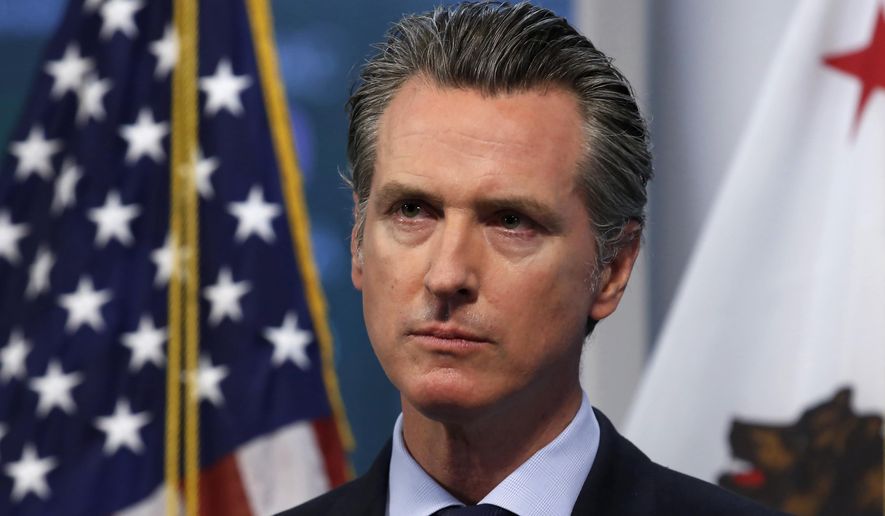SACRAMENTO, Calif. (AP) - California Gov. Gavin Newsom’s four young children thrust a cell phone into his face as he got out of his car, demanding he watch a video of a black man pleading with a white police officer in Minnesota to take his knee off his neck so he could breathe.
Newsom’s 10-year old daughter Montana said it was wrong. Her brother Hunter, 8, said it was “worse than wrong,” because “bad people are supposed to be bad but good people are supposed to be good.” Their 4-year-old brother, Dutch, chimed in to say it wasn’t right because “police officers are good people.”
That’s when Brooklyn, 6, “completely broke down,” Newsom said, and ran away saying: “I can’t talk about all this.”
“That was before I even walked into the house,” Newsom recounted Friday at the start of his briefing on the state’s response to the cornavirus. “Four young kids, trying to come to grips with what millions of Americans are trying to come to grips with.”
The death of George Floyd at the hands of Minneapolis police this week has sparked protests in California and around the country as the nation again confronts racial injustice.
Newsom, known for a wonky speaking style that favors terms like “through-put” that are more fitted to a Silicon Valley board room, responded on Friday the way he sometimes does when he wants to convey his feelings on a difficult subject: He talked about his family. At times, his voice quivered and it seemed he was holding back tears.
In mid-March, two days before Newsom imposed the nation’s first statewide stay-at-home order, he delivered what at the time was stunning news that it was unlikely public schools would reopen this academic year. He said he felt obligated to inform the public after telling his daughter the night before: “‘Honey, I don’t think the schools are gonna open again.’”
“If I can tell my daughter that and not tell your daughter … then I’m not being honest and true to the people of the state of California,” Newsom said.
On Friday, he said his conversation with his children about Floyd’s death brought home “the privilege of my background,” including “the privilege my kids have in terms of their upbringing, the fact that they’re white.”
“I don’t have to raise my kids like my friends’ kids are raised and so many other millions of Americans’ kids are raised,” he said. “I know in the hearts of so many, there’s deep anger, there’s deep frustration, there’s deep fear. And I - I can attest to that. But only intellectually.”
California’s history is interwoven with racial injustice and violence, from riots in the 1870s in Los Angeles and San Francisco that saw Chinese immigrants murdered to the 1992 LA riots where dozens were killed and thousands arrested following the acquittal of four white police officers in the beating of black motorist Rodney King.
Two years ago Sacramento was roiled by protests over the fatal police shooting of a young black man. No officers were charged.
Last year, Newsom signed a law that was influenced by the Sacramento killing. It changing the standard for when police officers can use deadly force and when they can be prosecuted for abusing it. The new law is among the nation’s most comprehensive governing police use of force.
“Passing a law, you’re not solving problems. You’ve got to change the culture,” Newsom said Friday. “We’ve got to fundamentally change who we are and recognize what we’re capable of being.”
Newsom said change is needed beyond just the criminal justice system and includes public health. While blacks make up about 6.5% of the state’s population of 40 million, they have accounted for 10.1% of the state’s coronavirus deaths.
“We have to be more resolved now than ever to do more and be better as human beings, as parents, as leader in our own right and to model better behavior,” Newsom, his voice catching as he invoked the Rev. Martin Luther King, who he said reminded people “that we’re all bound together by a web of mutuality, that we’re all in this together.”
Newsom urged protesters this weekend to express themselves “thoughtfully and gently - but forcefully” so that “we, collectively, can not only hear your voice but we can resolve to do something with the lesson that we learn.”




Please read our comment policy before commenting.